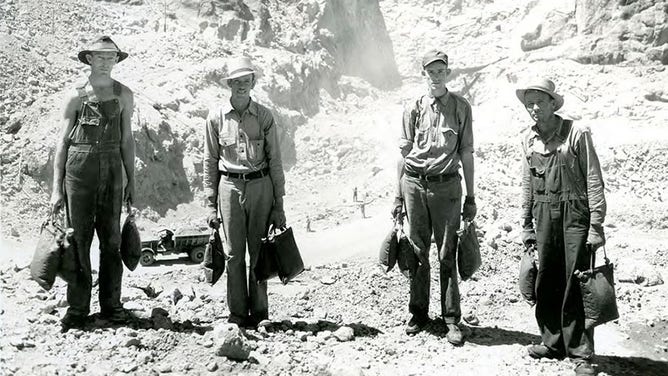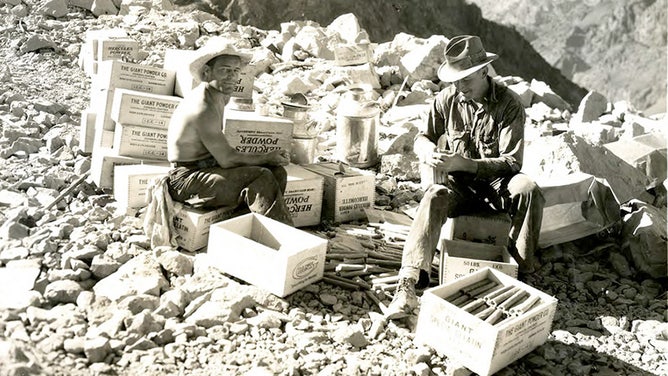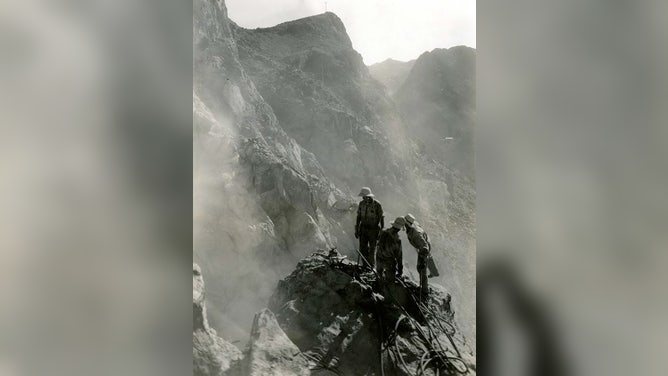On this day: The Hoover Dam completed 87 years ago
The history of Hoover Dam began in 1921 when Herbert Hoover proposed the construction of a dam on the Colorado River.
New ways to conserve Colorado River water amid drought
The Colorado River is essential to life in the West—providing water to about 40 million people. But after decades of drought and overuse, the river is critically low. FOX Weather’s Max Gorden talked with researchers who are surveying people to develop new ways to conserve water.
The Hoover Dam is one of the most impactful engineering feats in American history.
Completed on March 1, 1936, the dam spent nearly a century harnessing the mighty Colorado River and transforming parts of the arid Southwest into fertile farmlands and bustling city centers.
Here’s a look at the dam's history and how it shaped the region.
Why the Hoover Dam was built
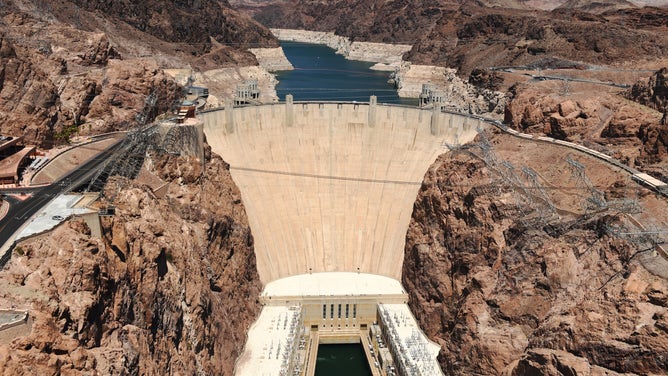
Wide shot of the Hoover Dam.
(RJ Sangosti / MediaNews Group / The Denver Post / FOX Weather)
The history of Hoover Dam began in 1921, when a young Secretary of Commerce, Herbert Hoover, proposed the construction of a dam on the Colorado River.
NEW WAYS TO CONSERVE COLORADO RIVER WATER AMID DROUGHT
At the time, the Colorado River, which ran uninterrupted from the Rocky Mountains to the Gulf of California, was considered dangerous and unreliable. According to the National Park Service, the river would often flood, particularly in late spring and early summer, when snow melted from the Rocky Mountains would surge into the river.
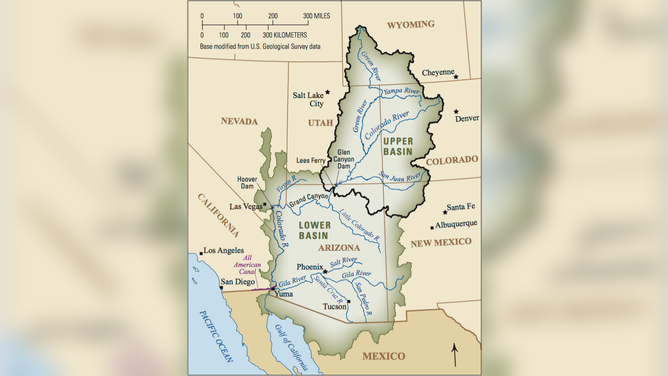
Map of the Colorado River basin. Hoover Dam is located on the border between Nevada and Arizona.
(U.S. Geological Survey / FOX Weather)
One notable flooding event occurred in southern California in 1905. NPS said the river flooded rich, irrigated farmland and cost Congress more than $10 million dollars over 20 years to protect the area’s farmers from floods.
Studies in the area led many to conclude that a dam on the lower Colorado River would be the best way to protect southern California - along with parts of Nevada and Arizona – from the river’s floods.
Hoover worked with state representatives about building a dam. He then helped write the Boulder Canyon Project Act, which authorized the construction of the dam.
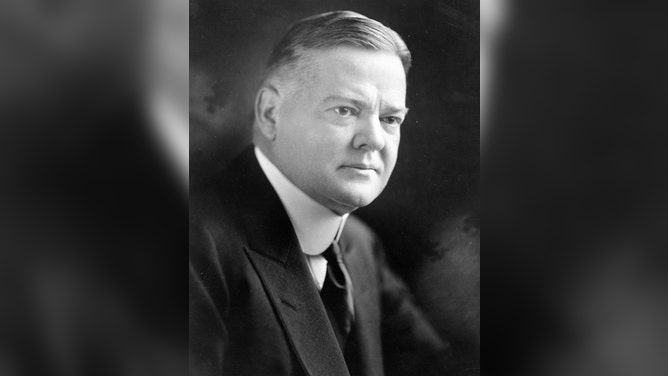
Herbert Hoover in 1928, the year before he became President of the United States.
(National Parks Service / FOX Weather)
The Boulder Canyon Project Act was passed on Dec. 18, 1928, and Hoover, who became President that following year, signed it into law on June 25, 1929.
Construction of the Hoover Dam
Construction on the dam began on April 20, 1931, and lasted until March 1, 1936.
About 16,000 people worked on the project, with approximately 3,500 employed at any one time, according to the National Archives. At this point, the Great Depression was in full swing, but work on Hoover Dam allowed many to provide for themselves and their families.
HOW MOUNT RUSHMORE NATIONAL MEMORIAL WAS BUILT
The work, however, was dangerous. Plus, laborers sometimes worked in desert temperatures of more than 120 degrees. Over the five years to complete the project, 96 workers died.
When the dam was finished, it stood as a testament to the engineering prowess of Americans. According to the National Archives, the dam stood more than 700 feet tall, 45 feet thick at the top and 660 feet thick at the base and ran 1,244 feet from one side to the other.
The dam weighed 6.6 million tons and used enough concrete to build a highway from San Francisco to New York City, said the Bureau of Reclamation. Part of the U.S. Department of the Interior, the Bureau of Reclamation owns and manages the dam.
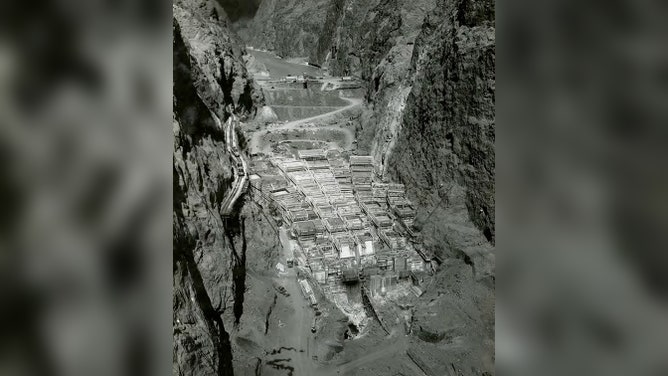
The Hoover Dam as it's being constructed. August 22, 1933.
(The National Archives / FOX Weather)
By building Hoover Dam, a 115-mile-long reservoir was created and named Lake Mead. According to the National Archives, Lake Mead was the largest artificial lake in the world for decades and remains the largest reservoir in the country.
ROBBING LAKE MEAD OF WATER: THE EMERGENCY PLAN AIMED AT KEEPING WATER FLOWING TO THE WEST
The volume of water in Lake Mead was so great that it deformed the Earth's crust and caused 600 small earthquakes in the late 1930s, the NPS said.
Water from Lake Mead fueled a hydroelectric power plant in the base of Hoover Dam. The power plant has a power generating capacity of 2.8 million kilowatts and could store up to 2 years’ average flow of water, the National Archives said.
How the Hoover Dam transformed the Southwest
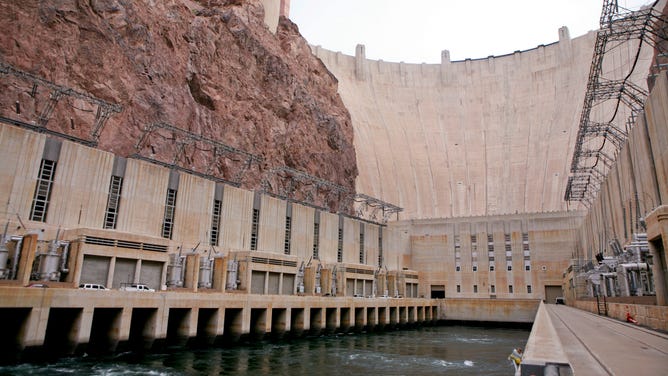
The south side of the Hoover Dam and power plant are shown Wednesday, June 3, 2009.
(Ronda Churchill / Bloomberg News / FOX Weather)
Today, the electricity generated at Hoover Dam is sent to millions across three states. Approximately half is sent to Los Angeles and other parts of southern California, while the remaining electricity is sent to Nevada and Arizona.
This power, along with the ability to control the Colorado River, transformed the Southwest.
The Hoover Dam now irrigates more than 1.5 million acres of land, provides water to more than 16 million people and powers more than 500,000 homes.

